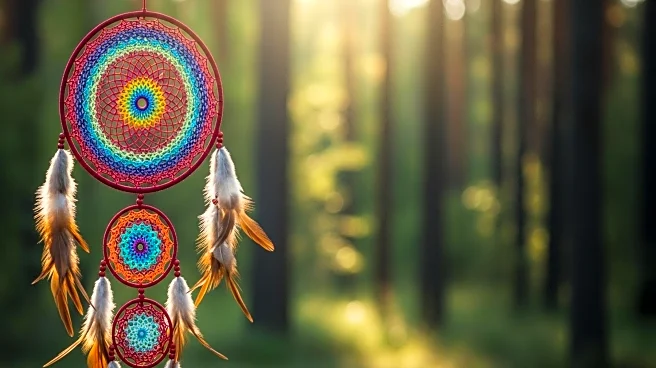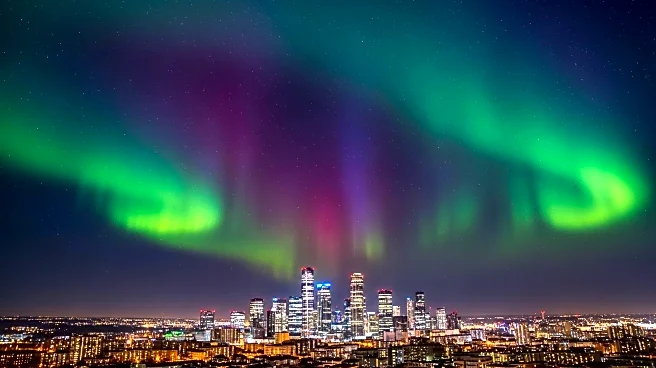What's Happening?
Sky Hopinka, a Ho-Chunk and Pechanga artist and filmmaker, has released a new documentary titled 'Powwow People.' The film offers a vérité perspective of a powwow, capturing the event from within the circle and blurring the lines between director and subject. The documentary was filmed at Seattle's Daybreak Star Indian Cultural Center and showcases the performance traditions of Indigenous groups, developed following forced resettlement. The film condenses a three-day powwow into a single day, highlighting the logistics and social networks that sustain Indigenous cultural practices. Hopinka's work continues his exploration of tradition and identity, previously seen in his feature documentary 'maɬni – towards the ocean, towards the shore.'
Why It's Important?
The documentary 'Powwow People' is significant as it provides an immersive look into Indigenous cultural traditions, offering educational insights while actively engaging viewers in the experience. By focusing on the logistics and social networks that support these traditions, Hopinka's work contributes to the preservation and understanding of Indigenous cultures. This film can foster greater appreciation and awareness of the challenges faced by Indigenous communities in maintaining their cultural heritage. It also highlights the importance of representation and participatory filmmaking in documenting and sharing diverse cultural narratives.
What's Next?
The release of 'Powwow People' may lead to increased interest in Indigenous cultural events and traditions, potentially encouraging more filmmakers to explore similar themes. It could also inspire discussions on the role of documentaries in preserving cultural heritage and the importance of participatory approaches in filmmaking. As audiences engage with the film, there may be opportunities for further exploration of Indigenous narratives and collaborations with Indigenous communities to support cultural preservation efforts.
Beyond the Headlines
The documentary's approach to capturing the powwow from within the circle challenges traditional ethnographic filmmaking methods, emphasizing the importance of participatory and immersive storytelling. This approach can influence future documentary practices, encouraging filmmakers to prioritize the perspectives and voices of their subjects. Additionally, the film's focus on the logistics of tradition highlights the complexities of cultural preservation, offering insights into the infrastructure and community efforts required to sustain cultural practices.












